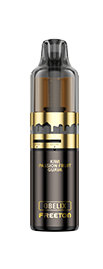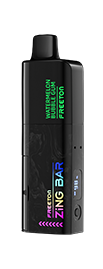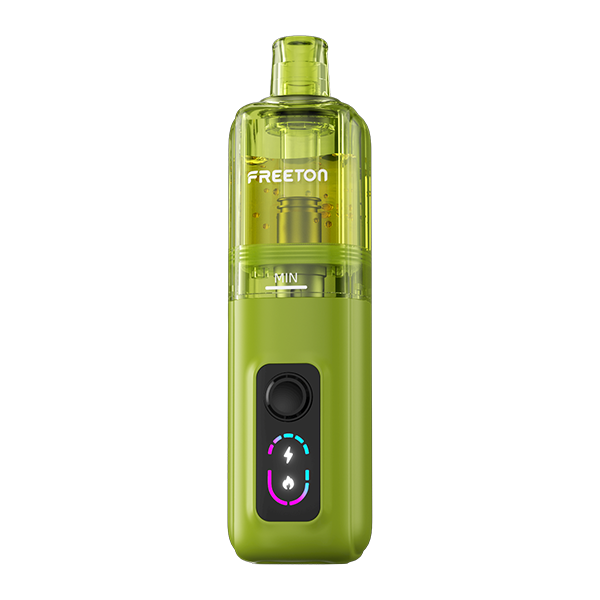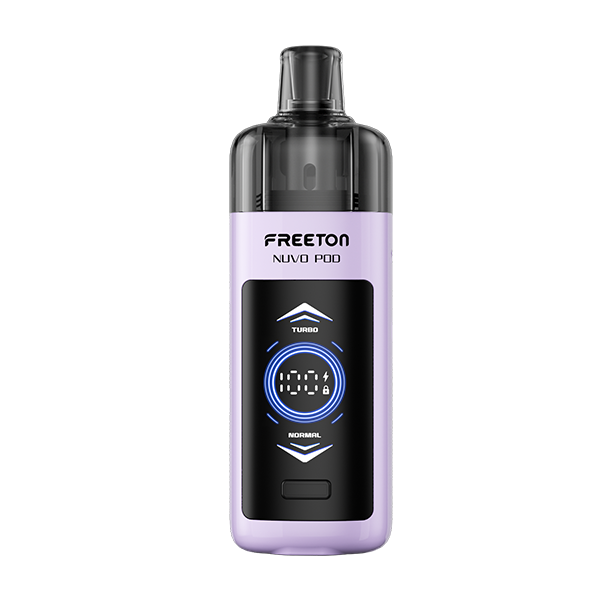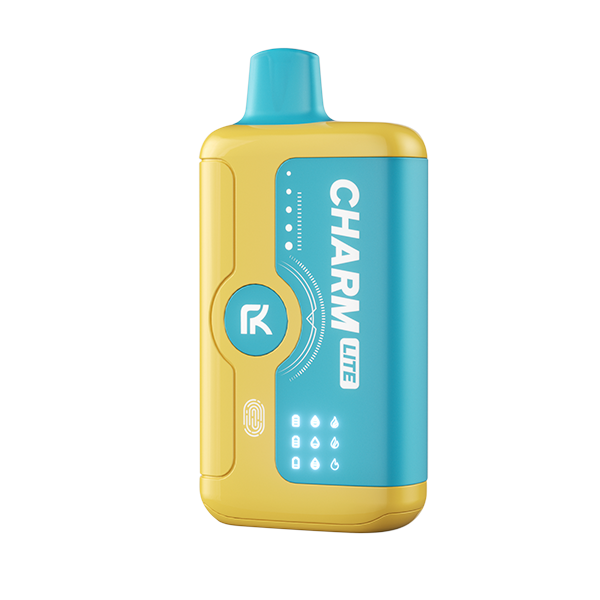
Introduction to Disposable Vapes The phenomenon of disposable vapes has surged across the globe, marking a significant shift in the smoking and vaping landscape. These devices, designed for single use, offer a convenient and straightforward approach to vaping, encapsulating a hassle-free experience for users. The essence of disposable vapes lies in their simplicity and portability, […]
Introduction to Disposable Vapes
The phenomenon of disposable vapes has surged across the globe, marking a significant shift in the smoking and vaping landscape. These devices, designed for single use, offer a convenient and straightforward approach to vaping, encapsulating a hassle-free experience for users. The essence of disposable vapes lies in their simplicity and portability, eliminating the need for recharging or refilling, which appeals to a broad spectrum of users, from seasoned smokers to curious beginners.
In recent years, Europe has witnessed a remarkable rise in the popularity of disposable vapes. This trend is not merely a fashion statement but a reflection of the changing attitudes towards smoking and vaping. With a wide array of flavors and strengths, disposable vapes cater to diverse preferences, contributing to their widespread acceptance. Their growth in popularity is also fueled by the ongoing debates about smoking cessation and harm reduction strategies. As these conversations evolve, disposable vapes have positioned themselves as a central figure in the discourse, sparking interest and adoption among millions.
The allure of disposable vapes in Europe is multifaceted, influenced by cultural shifts, regulatory landscapes, and the relentless pursuit of healthier alternatives to traditional smoking. As we delve deeper into the intricacies of disposable vapes, their impact on health, environment, and society becomes a subject of global relevance, inviting scrutiny, debate, and research from various quarters.

Components of a Disposable Vape
Delving into the anatomy of a disposable vape reveals a marvel of modern engineering, designed to deliver a seamless vaping experience. At the core of these devices are several key components, each playing a vital role in their functionality and appeal.
Materials and Technology: The body of a disposable vape is typically made from lightweight, durable plastics or metal, housing the internal technology that powers the device. This includes a battery, often lithium-ion, which is calibrated to last until the e-liquid is depleted. The heart of the device is the atomizer, a heating element that vaporizes the e-liquid upon activation, usually through inhalation or a button press.
E-liquid Ingredients: The soul of the disposable vape lies in its e-liquid, a mixture that usually contains propylene glycol (PG), vegetable glycerin (VG), flavors, and nicotine. The PG/VG base serves as the carrier for the flavors and nicotine, providing the vapor's texture and throat hit. The nicotine content varies, catering to different user preferences, from high concentrations for heavy smokers to nicotine-free options for those seeking the sensory experience without the addictive substance.
The flavors are a significant draw for disposable vapes, offering a spectrum ranging from classic tobacco and menthol to exotic fruits and desserts. These flavors, combined with the ease of use, make disposable vapes particularly appealing to a wide audience, including younger adults and those looking to transition away from traditional cigarettes.
However, it's the simplicity and disposability that underscore the design philosophy of these devices. By integrating the battery, atomizer, and e-liquid into a single unit, manufacturers have created a product that prioritizes convenience over customization, catering to a society that values ease and efficiency.
As we progress through the nuances of disposable vapes, it becomes clear that their design is a thoughtful blend of technology and consumer needs, aimed at delivering a straightforward, enjoyable vaping experience. Yet, beneath the surface of these sleek devices are questions about their long-term impact on health and the environment, subjects that warrant a closer examination.
The Convenience Factor
The allure of disposable vapes lies not just in their variety or novelty but significantly in their unparalleled convenience. This convenience factor is a cornerstone of their appeal, offering users an effortless entry point into vaping without the complexities associated with more traditional vaping devices. The plug-and-play nature of disposable vapes means there is no need for the maintenance tasks like charging batteries or refilling e-liquid, which can be daunting for newcomers to the vaping scene.
Disposable vapes are designed with accessibility in mind. They are compact, making them easy to carry and use on the go, fitting seamlessly into the lifestyles of busy individuals or those who prefer not to engage with the technicalities of rechargeable vaping devices. This ease of use extends to travel, social gatherings, and daily commuting, where the simplicity of pulling out a device and immediately enjoying it is highly valued.
Comparing disposable vapes to rechargeable vaping devices illuminates the trade-offs between convenience and customization. While rechargeable devices offer seasoned vapers the ability to customize flavors, nicotine strengths, and vapor production, they also require a level of engagement and knowledge that can be off-putting for some. Disposable vapes, on the other hand, provide a straightforward solution without the need for such personalization or technical knowledge, making them an attractive option for those seeking simplicity in their vaping experience.
This convenience, however, does not come without its considerations. The ease of use and accessibility might lead to increased usage, prompting discussions around consumption patterns and the importance of moderation. Furthermore, the comparison between disposable and rechargeable devices raises questions about environmental sustainability and long-term cost-effectiveness, aspects that are increasingly significant in the consumer's decision-making process.
As we navigate the pros and cons of disposable vapes, it's clear that their convenience is a double-edged sword, offering simplicity and accessibility while also posing challenges that the industry and consumers alike must address.
Health Concerns Associated with Disposable Vapes
The health implications of disposable vapes have become a focal point of discussion among health professionals, researchers, and the public. While the convenience of disposable vapes is undeniable, it's crucial to understand the potential health risks they pose. The core of the concern revolves around the inhalation of vaporized e-liquid, which contains nicotine, flavorings, and other additives.
Nicotine is a well-known addictive substance, and its presence in disposable vapes raises questions about dependency and long-term health effects. Despite being marketed as a smoking cessation tool, the risk of addiction to nicotine remains significant, especially among young and first-time users. Dr. John Smith, a leading pulmonologist, emphasizes, "While disposable vapes may reduce exposure to some of the harmful chemicals found in traditional cigarettes, they are not without their own risks, particularly concerning nicotine addiction and its cardiovascular implications."
Recent studies have shed light on the potential impact of vaping on lung health. The inhalation of certain chemicals found in e-liquids, such as propylene glycol and vegetable glycerin, when heated and vaporized, can lead to respiratory issues. Dr. Smith further notes, "There's growing evidence to suggest that long-term use of disposable vapes can contribute to respiratory discomfort and conditions such as bronchitis or dry cough."
Moreover, the flavorings used in disposable vapes, designed to enhance the appeal of these products, have come under scrutiny. Some flavoring compounds, when vaporized, can transform into harmful substances, potentially leading to lung damage. The CDC has expressed concerns about the lack of long-term data on the health effects of inhaling these flavorings, underlining the need for caution and further research.
It's imperative for users and policymakers to navigate the landscape of disposable vapes with a critical eye towards health. While they offer a less harmful alternative to combustible tobacco products, understanding and mitigating the potential health risks is essential. As research continues to evolve, so too will our understanding of the true impact of disposable vapes on health, guiding better practices and regulations to ensure public safety.
Potential Benefits Over Traditional Smoking
Amid the swirling concerns around the health implications of disposable vapes, there exists a compelling narrative about their potential benefits over traditional smoking. The transition from combustible cigarettes to disposable vapes is often highlighted as a lesser of two evils, with proponents arguing for the relative reduction in harmful chemical exposure.
Traditional cigarettes burn tobacco, releasing a cocktail of over 7,000 chemicals, many of which are toxic and carcinogenic. Disposable vapes, on the other hand, do not involve combustion. Instead, they heat a liquid that contains nicotine, flavorings, and other substances to create an aerosol. This fundamental difference in operation significantly reduces the user's exposure to many harmful substances found in tobacco smoke. Dr. Emily Clark, a researcher in public health, points out, "Switching from smoking to vaping could reduce a smoker’s exposure to numerous toxic substances and carcinogens."
Disposable vapes have also been discussed in the context of smoking cessation. For individuals struggling to quit smoking, disposable vapes can serve as a transitional tool, offering the nicotine fix without the more harmful aspects of smoking tobacco. There are success stories of individuals who have used disposable vapes to gradually reduce their nicotine dependency and eventually quit smoking altogether. "The key advantage of disposable vapes lies in their role as a harm reduction tool, providing smokers with an alternative that mimics the act of smoking but with potentially fewer health risks," adds Dr. Clark.
It's important to note, however, that while disposable vapes may present fewer health risks compared to traditional cigarettes, they are not risk-free. The recommendation to switch to disposable vapes is often made with the caveat that cessation of all nicotine products is the best outcome for health.
The dialogue on the benefits of disposable vapes over traditional smoking is ongoing, with further research needed to fully understand their long-term impact. Nonetheless, the potential for disposable vapes to act as a stepping stone towards quitting smoking cannot be overlooked. As more smokers turn to vaping in search of a safer alternative, the stories of those who have successfully transitioned offer hope and insight into the complex journey of smoking cessation.
Environmental Impact
The environmental concerns surrounding disposable vapes have sparked a significant debate, shedding light on the sustainability issues posed by these single-use devices. As the popularity of disposable vapes surges, so does the accumulation of electronic waste, which poses a formidable challenge to environmental sustainability efforts. The core of the problem lies in the disposability aspect, where the convenience for the user translates into a burden for the environment.
Each disposable vape contains a variety of materials, including plastics, metals, and electronic components, which complicate recycling processes. The disposability factor leads to an increased volume of waste, much of which ends up in landfills, contributing to pollution and the depletion of natural resources. Environmental advocate, Dr. Emily Green, warns, "The rapid increase in disposable vape waste is a growing concern, as it not only adds to the global e-waste problem but also poses risks to wildlife and ecosystems when improperly disposed of.
Addressing the environmental impact of disposable vapes requires a multifaceted approach. Innovations in product design, such as developing more sustainable materials and making devices more easily recyclable, are critical steps forward. Moreover, implementing take-back programs and encouraging proper disposal are essential in mitigating the adverse effects on the environment.
Some companies are already exploring solutions, such as biodegradable components and refillable options, to minimize the ecological footprint of vaping products. However, significant progress will require industry-wide commitment and stricter regulatory frameworks to ensure environmental considerations are at the forefront of product development and disposal practices.
The conversation around the environmental impact of disposable vapes is a crucial reminder of the need to balance convenience with responsibility. As consumers, choosing products with a lesser environmental impact and adhering to proper disposal methods can contribute to a more sustainable future. Meanwhile, policymakers and manufacturers must collaborate to address the environmental challenges posed by disposable vapes, ensuring that this popular trend does not come at the expense of the planet.
Usage and Safety Guidelines
Navigating the world of disposable vapes requires an understanding of their proper use and the safety guidelines that ensure a risk-minimized experience. As disposable vapes continue to gain popularity, especially among younger demographics, the importance of adhering to usage and safety protocols cannot be overstated.

Best Practices for Using Disposable Vapes Safely
Age Restrictions: It's imperative to follow legal age restrictions, which vary by country but generally prohibit the sale of vaping products to individuals under 18 or 21 years old. These laws are in place to protect young people from early exposure to nicotine, which can have long-term health implications.
Proper Handling: Disposable vapes should be used as intended and not modified or tampered with. Altering the device can lead to malfunctions, exposing the user to unnecessary risks, including exposure to potentially harmful chemicals or even battery explosions.
Mindful Usage: Users should be mindful of their vaping habits to avoid excessive consumption. Nicotine addiction is a serious concern, and disposable vapes, with their convenience and accessibility, can inadvertently facilitate dependency.
Disposal: Proper disposal of disposable vapes is crucial. Users should follow local regulations regarding the disposal of electronic waste to prevent environmental damage and potential harm to wildlife.
Regulations Governing the Sale of Disposable Vapes
The regulatory landscape for disposable vapes is evolving as authorities seek to balance public health interests with consumer freedoms. Regulations may include restrictions on sales, limitations on nicotine content, and requirements for child-resistant packaging. Compliance with these regulations is essential for manufacturers and retailers to ensure the safety and well-being of consumers.
Dr. Lisa Patel, a public health expert, emphasizes, "Educating consumers about the responsible use of disposable vapes and the potential risks associated with vaping is crucial in mitigating health risks." She advocates for clear labeling, including health warnings and usage instructions, to inform users about the safe handling and potential health implications of disposable vapes.
In conclusion, while disposable vapes offer a convenient alternative to traditional smoking, their use must be approached with caution and responsibility. Adhering to usage guidelines and safety protocols can help minimize health risks and ensure a safer vaping experience for all users.
FAQs: Common Questions About Disposable Vapes
Q: Are disposable vapes safe to use?
A: Disposable vapes are generally considered safer than traditional cigarettes because they do not produce tar or carbon monoxide. However, they still contain nicotine, which is addictive, and other substances that may pose health risks. It's essential to use them responsibly and be aware of the potential health implications.
Q: Can disposable vapes help me quit smoking?
A: Many users find disposable vapes a helpful tool in their journey to quit smoking, as they mimic the act of smoking but with reduced harmful substances. However, effectiveness varies from person to person, and it's crucial to approach quitting with a comprehensive plan that may include professional support.
Q: How long does a disposable vape last?
A: The lifespan of a disposable vape depends on the brand and model, as well as how frequently it is used. On average, a single device can last anywhere from 200 to 600 puffs. It's important to follow the manufacturer's guidance and dispose of the device properly once it's used up.
Q: What should I do with a disposable vape once it's empty?
A: Proper disposal of disposable vapes is crucial to minimize environmental impact. Do not throw them in regular trash. Instead, dispose of them at designated electronic waste recycling centers or return them to retailers if they offer a recycling program.
Q: Is there an age restriction for purchasing disposable vapes?
A: Yes, there are age restrictions for purchasing disposable vapes, which vary by country. Most places require purchasers to be at least 18 or 21 years old to buy vaping products to prevent underage use and exposure to nicotine.
Q: Can disposable vapes explode?
A: While extremely rare, there have been instances of vaping devices malfunctioning. Proper use, storage, and not tampering with the device significantly reduce the risk of explosions. Always purchase disposable vapes from reputable sources to ensure they meet safety standards.
Q: Are there any environmental concerns associated with disposable vapes?
A: Yes, environmental concerns arise from the disposability and materials used in disposable vapes. They contribute to electronic waste and can harm the environment if not disposed of correctly. Efforts are being made to create more sustainable options and improve recycling processes.











